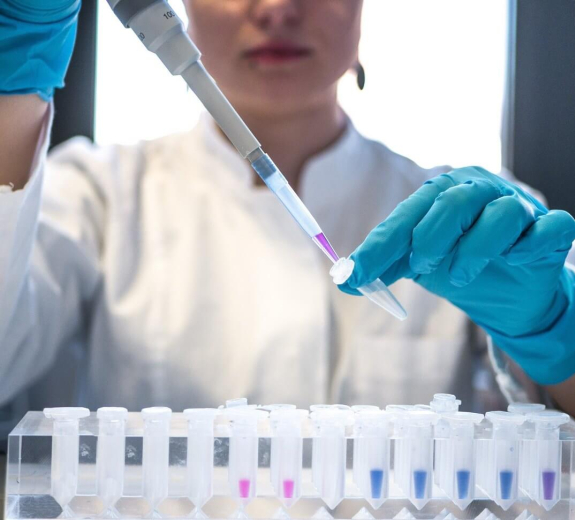
Pipeline Analyzes Destructive Cell
There are approximately 50,000 immune cells in every single drop of blood. In a person with an autoimmune disease, only one or two of those cells cause the disease, while the others are busy protecting the body from unrelated infections and toxins. Benaroya Research Institute is conducting new research to discover and interrogate these rare, specific cells to improve diagnosis and therapy of autoimmunity. And by focusing on these rare disease-associated cells, BRI is learning the key molecular patterns of the cells in individuals who have immune-mediated diseases, and those patterns that determine who responds to treatment.
Over the last few years, several unique and pioneering technologies at BRI have been combined to create a “pipeline” approach to find and study these rare cells. The pipeline begins with identifying the autoimmune-causing cells in a blood sample, using markers on these cells that allow researchers to isolate them for study. Cells are then captured in sophisticated nanofluidic chambers in equipment that separate the RNA, which holds the code to the cell’s destiny. Another high technology machine reads that code using advanced DNA sequencing. (The nucleic acids, DNA and RNA, carry the genetic information necessary to build and maintain an organism’s cells and pass genetic traits to offspring.)
In this fashion, BRI’s scientists can take blood samples from diverse research study participants—for example, people with peanut allergy, or children at risk of type 1 diabetes, or patients taking experimental therapy for rheumatoid arthritis-—put the samples into this pipeline, and discover the underlying disease-associated code that drives each immune cell.
“It’s an important advance,” says BRI Director Gerald Nepom, MD, PhD. “Our ultimate goal is to be able to find the right treatment at the right time for each person. By understanding the underlying cellular programs that are present in patients with disease, we can improve diagnosis and therapy, making significant contributions to ultimately eliminate autoimmune and other immune diseases.”
Bar coding T cells
When functioning normally, the immune system will seek out and destroy invaders of the body, such as infections. But sometimes the immune system goes awry and attacks the body’s own tissues and causes autoimmune diseases such as type 1 diabetes, multiple sclerosis or rheumatoid arthritis. In other cases the immune system overreacts to a foreign substance and causes an allergy.
The T cells in the immune system are the destructive leaders in these immune responses. Over the last decade, BRI scientists have become international leaders in identifying ways to isolate these rare and hard-to-find cells. “Our scientists can look at specific T cells and decipher a sort of “bar code” that distinguishes each individual T cell from the billions of other T cells found in every individual,” says BRI Director of Systems Immunology Peter Linsley, PhD. Using these bar codes, researchers can determine the functions of individual T cells, what happens to each disease-causing T cell during disease progression and how it responds to treatment.
One of the unique features of this BRI analytic pipeline is the development of bioinformatics tools that enable researchers to link what single T cells do with what these T cells are targeting.
Impact and future potential
Knowing what T cells are doing and what they are targeting is key to being able to apply this technology to many different types of immune disorders, ranging from allergy to autoimmune diseases, to vaccines and even cancer therapy. For example, in the current peanut allergy and grass allergy clinical trials run by the Immune Tolerance Network, pipeline analysis by the Wambre and Kwok laboratories at BRI is being used to try to determine not only the cellular effects of therapy, but also the type of variation seen in different people that may explain why some people respond and others don’t. These studies are not only uncovering new insights into the causes of disease, they are also leading the way toward an era of personalized medicine, in which we will customize therapy to the right targets in each individual.
Immuno-what? Hear the latest from BRI
Keep up to date on our latest research, new clinical trials and exciting publications.


